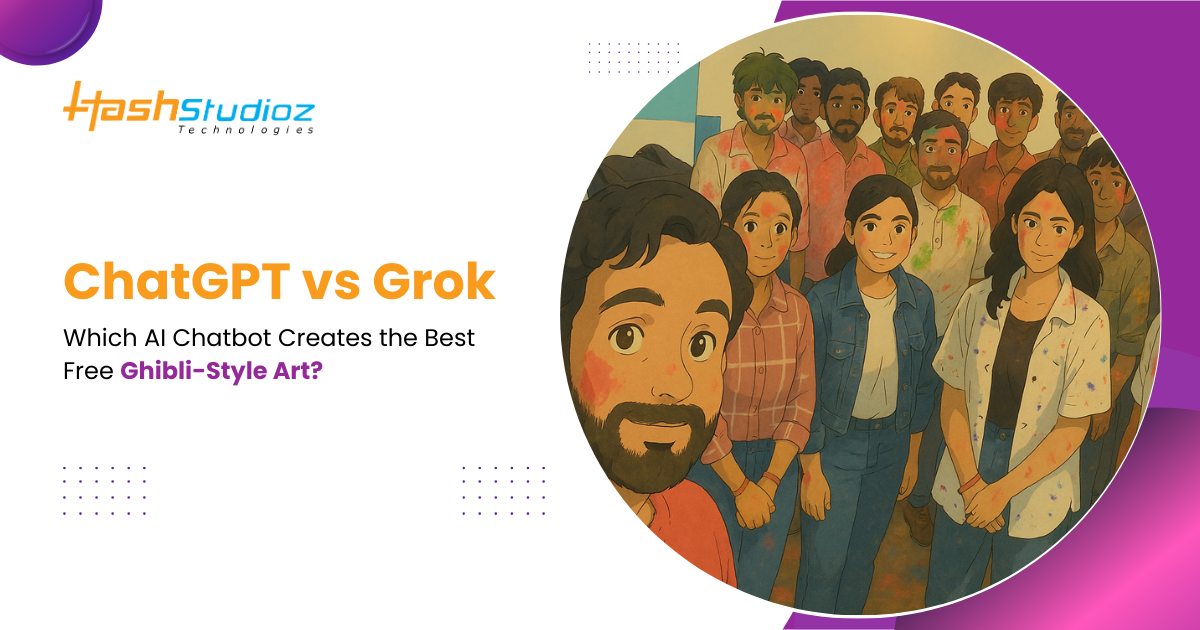The world of artificial intelligence (AI) has witnessed rapid developments in recent years, with AI chatbots and tools revolutionizing how we interact with technology. Among the many tools available, ChatGPT and Grok stand out for their ability to create unique and personalized artwork. In particular, these AI systems have gained attention for their ability to generate Ghibli-style portraits – images that evoke the magic and charm of Studio Ghibli’s animated films.
In this article, we will delve deep into the capabilities of both ChatGPT and Grok, examining which AI chatbot can create the best free Ghibli-style portraits. We’ll compare their ease of use, the quality of the generated images, the customization options, and much more to help you decide which tool is the right choice for you.
Table of Contents
- What is Studio Ghibli?
- What is a Ghibli-Style Portrait?
- The Rise of AI Chatbots in Creative Industries
- ChatGPT: An Overview of Capabilities
- Grok: The Emerging AI Art Creator
- Transforming Photos into Ghibli-Style Art: The Technology Behind AI Image Generation
- Comparing ChatGPT and Grok for Ghibli-Style Portraits
- Conclusion
- Frequently Asked Questions (FAQs)
What is Studio Ghibli?
Before we dive into the AI tools, it’s important to understand what makes the Ghibli-style so iconic. Studio Ghibli is a Japanese animation studio founded in 1985 by Hayao Miyazaki and Isao Takahata, two of the most renowned figures in the world of animation. Known for creating beautifully crafted films with deeply meaningful narratives, Ghibli films blend fantasy and reality, offering both whimsical and thought-provoking experiences.
Studio Ghibli’s animation style is instantly recognizable. The characters are often soft and rounded, with expressive faces and detailed, immersive backgrounds that capture a sense of wonder. The studio’s films, such as Spirited Away, My Neighbor Totoro, and Princess Mononoke, are beloved worldwide, not just for their beautiful animation but for their ability to evoke emotions, tackle profound themes, and transport audiences to magical worlds.
The Ghibli-style portrait reflects the studio’s signature elements: vibrant colors, soft lines, and a dreamlike atmosphere. Whether it’s the lush greenery from Princess Mononoke or the quiet serenity of the countryside in My Neighbor Totoro, the hallmark of Ghibli art is its ability to make the ordinary feel extraordinary.
What is a Ghibli-Style Portrait?
Before diving into the comparison, it’s important to understand what makes a Ghibli-style portrait special. Inspired by the legendary Studio Ghibli, known for films like My Neighbor Totoro and Spirited Away, Ghibli-style portraits are characterized by their whimsical and serene aesthetic. They often feature soft, rounded characters, lush, detailed backgrounds, and a sense of calm wonder. These portraits capture a sense of nostalgia, magic, and innocence – qualities that Studio Ghibli films are renowned for.
Creating a Ghibli-style portrait requires a fine balance between vivid detail and dreamlike simplicity. With the help of advanced AI tools like ChatGPT and Grok, users can now experiment with generating these enchanting portraits in just a few clicks.
The Rise of AI Chatbots in Creative Industries
AI chatbots have rapidly evolved beyond simple text-based communication tools. Today, many AI platforms offer creative functionalities, including art generation, music composition, and writing assistance. The key to the success of these AI systems lies in their ability to analyze vast amounts of data and generate outputs that mimic human creativity.
When it comes to art generation, AI chatbots like ChatGPT and Grok have risen to the challenge by allowing users to request custom artwork, including those with distinct styles like Ghibli-inspired designs. These tools utilize machine learning and deep learning algorithms to understand and replicate artistic styles, making them invaluable for anyone interested in digital art creation.
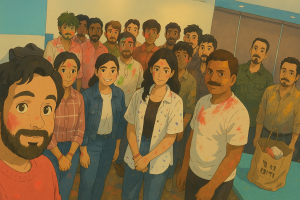
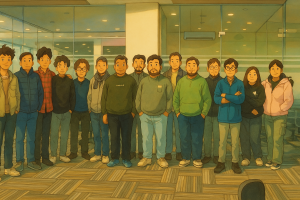
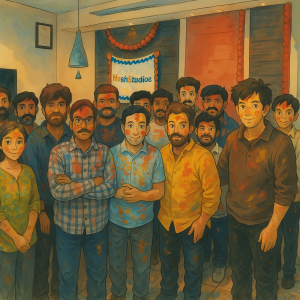
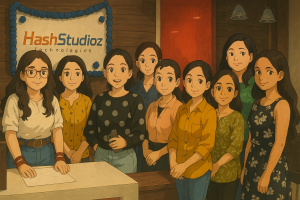
ChatGPT: An Overview of Capabilities
ChatGPT, developed by OpenAI, is primarily known for its conversational abilities. It uses natural language processing (NLP) to engage users in interactive discussions on a wide range of topics. However, with the introduction of image generation capabilities, ChatGPT has evolved into a versatile creative assistant.
Key Features of ChatGPT for Creating Ghibli-Style Portraits:
1. Text-to-Image Generation
ChatGPT can generate images based on descriptive text prompts. By describing the desired Ghibli-style portrait, users can receive AI-generated artwork that reflects their vision. For example, a prompt might include details like “Create a Ghibli-style portrait of a young girl surrounded by nature with soft, pastel colors.”
2. Customizable Prompts
ChatGPT allows users to fine-tune their requests by specifying certain elements they want to include, such as color palettes, lighting, and character features. This flexibility helps in generating portraits that align with the unique Ghibli aesthetic.
3. Free Access
One of the most appealing aspects of ChatGPT is that it offers free access to its basic features, including text-to-image generation. This makes it a great option for users looking for affordable artistic solutions.
4. Ease of Use
ChatGPT’s interface is user-friendly, and it offers a simple prompt-based system that makes generating custom art straightforward, even for beginners. Its conversational style also adds a personal touch to the creative process.
Limitations of ChatGPT in Ghibli-Style Portrait Creation:
While ChatGPT is powerful, there are a few limitations to be aware of:
- Image Resolution: The quality of the images may not always meet professional standards, especially in terms of resolution and fine details.
- Limited Fine Art Control: While ChatGPT can generate impressive results, it might not always capture the full depth of the Ghibli style, especially in terms of lighting and textural effects.
Grok: The Emerging AI Art Creator
Grok, an AI chatbot that focuses specifically on art generation, has quickly gained attention for its ability to create stunning, high-quality images. While still relatively new, Grok has established itself as a reliable platform for AI-generated art.
Key Features of Grok for Creating Ghibli-Style Portraits:
1. Advanced Art Generation
Grok’s algorithms are designed to generate images with incredible detail and precision, making it ideal for creating portraits that require an intricate style, such as Ghibli-inspired artwork. It can handle complex prompts and produce more nuanced images compared to other AI tools.
2. Stylized Outputs
Grok excels at replicating specific art styles, including Ghibli-style portraits. By analyzing numerous examples of Ghibli art, Grok can produce highly accurate representations, capturing not only the visual but also the emotional tone of the original style.
3. High-Quality Output
Unlike some other AI tools, Grok focuses on high-resolution art creation. This means that the portraits generated are often of much higher quality, with more attention paid to shading, texture, and depth.
4. Customizable Parameters
Grok allows for greater control over the finer aspects of the generated art, including specific adjustments to character features, background elements, and even the overall ambiance of the image. This customization makes it possible to create portraits that are truly unique.
5. Free Access and Premium Options
Grok offers free access to its basic functionality, though premium features are also available for users who need more advanced features like higher-quality images or faster rendering times.
Limitations of Grok:
While Grok is a powerful tool, there are a few drawbacks:
- Learning Curve: Grok’s interface may feel more complex compared to ChatGPT, especially for beginners. While the tool is powerful, users might need some time to fully grasp its features and how to use them effectively.
- Free Access Limitations: The free version of Grok may have certain restrictions in terms of image resolution or the number of images you can generate.
Transforming Photos into Ghibli-Style Art: The Technology Behind AI Image Generation
AI tools that turn personal images into Ghibli-style artwork rely on powerful deep learning models. These tools recreate the whimsical, hand-drawn aesthetic of Studio Ghibli, allowing users to transform their photos into animated art. Let’s break down the key elements behind these AI-powered transformations:
1. Technology Used in Ghibli-Style AI Image Generation
The following techniques are commonly employed to turn real images into Ghibli-inspired artworks:
Style Transfer (Neural Style Transfer – NST)
- How it Works: Style transfer leverages deep learning to apply textures, colors, and visual styles (like those from Ghibli films) to a given photo.
- Tools & Examples:
- Deep Dream, Prisma, and open-source libraries like AdaIN (Adaptive Instance Normalization) are popular tools.
Generative Adversarial Networks (GANs)
- How it Works: GANs are trained on vast datasets of Ghibli-style animation frames to create new images in a similar artistic style.
- Tools & Examples:
- Models like StyleGAN, Toonify, or CartoonGAN are often used to replicate Ghibli-like aesthetics.
Diffusion Models
- How it Works: Advanced models like Stable Diffusion and DALL·E generate highly detailed anime-style art. Some models are even fine-tuned to specifically mimic Ghibli’s art style.
- Tools & Examples:
- AI-powered platforms (e.g., Fotor, ToonMe, TikTok’s AI Anime Filters) use these models for quick, real-time photo transformations.
2. Electricity Consumption of Ghibli-Style AI Tools
Generating high-quality AI artwork is computationally intensive. The energy usage varies based on the type of AI tool:
Cloud-Based AI Tools
- How it Works: These platforms rely on powerful servers equipped with GPUs to run intensive models.
- Energy Use:
- One AI image generation request can consume between 0.1 and 1 kWh, depending on the resolution and complexity of the image.
- For large-scale servers (e.g., Stable Diffusion or DeepAI), energy consumption can be significant, comparable to training deep learning models (hundreds of kWh per day).
- One AI image generation request can consume between 0.1 and 1 kWh, depending on the resolution and complexity of the image.
On-Device AI Tools
- How it Works: These tools run on mobile devices, which use efficient AI models to generate images.
- Energy Use:
- On-device AI (like filters on smartphones) uses only a few watts per image, relying on models like MobileNet or TensorFlow Lite to provide real-time transformations with lower power consumption.
3. Monetization of AI Ghibli-Style Tools
Platforms offering AI-driven Ghibli-style conversions typically monetize in the following ways:
Freemium Models
- Basic image transformations are free, but users need to pay for high-resolution or watermark-free versions.
Subscription Plans
- AI art tools like Fotor, DeepArt, or Lensa AI often charge a monthly fee for access to premium features.
Pay-Per-Use
- Some platforms charge $1–$5 for high-resolution, downloadable images.
NFT & Licensing
- AI-generated artworks are sometimes sold as NFTs or licensed to game developers, filmmakers, or social media platforms.
Advertising
- Free tools often rely on ads or social sharing requirements to unlock additional features.
4. Pros and Cons of AI Ghibli-Style Image Conversion
Like any technology, there are both benefits and challenges to using AI for generating Ghibli-style art:
Pros
- Quick & Easy: No need for manual digital painting skills – just upload a photo and let the AI work its magic.
- Cost-Effective for Creators: Avoid the costs of hiring an artist for custom animations.
- Customizable Styles: Many tools allow users to tweak colors, backgrounds, and expressions, offering a degree of personalization.
- Scalable: Large batches of images can be processed quickly, making it ideal for content creators or social media influencers.
Cons
- Loss of Artistic Touch: AI-generated artwork may lack the unique charm and personality of hand-drawn animations.
- Copyright Issues: AI models are trained on existing artworks, which raises ethical and legal concerns regarding copyright.
- High Computational Cost: Running AI models requires powerful GPUs, leading to significant energy consumption.
- Limited Accuracy: AI may struggle with complex poses, intricate lighting, or unique expressions, reducing the overall quality of the generated artwork.
Comparing ChatGPT and Grok for Ghibli-Style Portraits
When deciding between ChatGPT and Grok for generating Ghibli-style portraits, there are several factors to consider:
1. Image Quality
- ChatGPT: Produces decent results, but image quality may fall short in terms of fine detail and resolution.
- Grok: Delivers superior image quality, with more attention to detail and higher resolution outputs, making it the better choice for professional-grade portraits.
2. Ease of Use
- ChatGPT: Extremely easy to use, even for beginners. The conversational interface makes it accessible for most users.
- Grok: While powerful, it may require more time to learn, especially if you are new to digital art creation.
3. Customization
- ChatGPT: Offers a good level of customization, though it may be somewhat limited in terms of specific artistic control.
- Grok: Provides more advanced customization, allowing users to adjust intricate aspects of the art, such as lighting and texture.
4. Cost
- ChatGPT: Free access to basic features, with some limitations on image quality and customization.
- Grok: Also offers a free version, but users may need to pay for premium features to access the highest-quality art and faster processing times.
Conclusion
Both ChatGPT and Grok offer unique advantages when it comes to generating Ghibli-style portraits, and the best option ultimately depends on your specific needs.
- ChatGPT is ideal for beginners who are looking for a simple and free solution to generate decent Ghibli-inspired portraits. It’s easy to use, and its conversational interface allows for quick results.
- Grok, on the other hand, is better suited for those who are looking for higher-quality outputs with more advanced customization options. While it may have a steeper learning curve, the superior detail and resolution it offers make it a fantastic choice for creating professional-grade Ghibli-style portraits.
Ultimately, both tools are powerful in their own right, and the choice comes down to what you’re prioritizing: ease of use and speed, or artistic control and output quality.
Frequently Asked Questions (FAQs)
- Can I create Ghibli-style portraits with both ChatGPT and Grok for free?
Yes, both platforms offer free versions, but Grok provides better results for free users interested in Ghibli-style portraits. - Is Grok more customizable than ChatGPT for portraits?
Yes, Grok offers more control over the specific style and details of the portrait, making it more customizable for Ghibli artwork. - Which platform provides better quality for Ghibli-style portraits?
Grok is known for its higher quality, especially for specialized art like Ghibli-style portraits. - How do I access Ghibli-style portrait creation on ChatGPT or Grok?
On ChatGPT, you’ll need to use prompts or integrate external image-generation tools. On Grok, you can directly use the platform to generate artwork. - Can I use ChatGPT or Grok to create other types of art besides Ghibli portraits?
Yes, both platforms allow for the generation of various art styles, though Grok is more focused on images.

